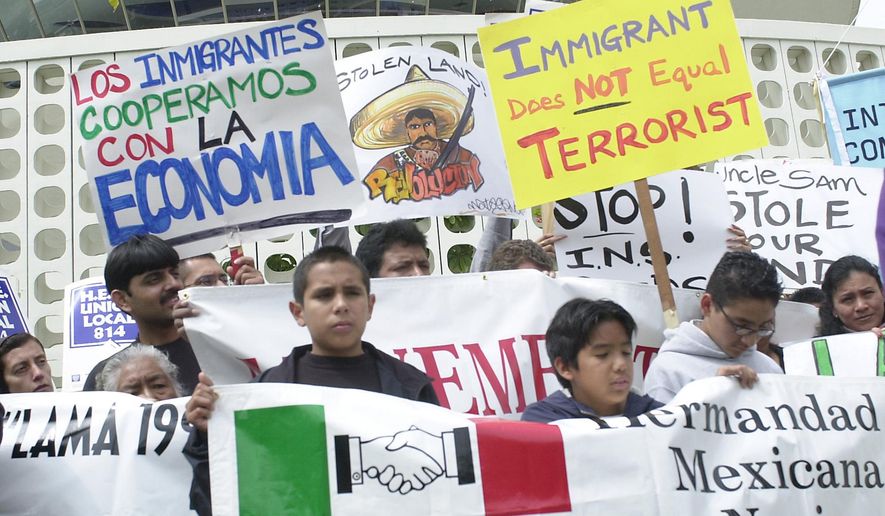
ALBUQUERQUE, N.M. (AP) - Several people were arrested this week after they placed a banner on the Statue of Liberty’s pedestal on the Fourth of July calling for abolishing U.S. Immigration and Customs Enforcement. Protesters forced the closure of the ICE building in Portland, Oregon, and more Democratic politicians have been embracing an “abolish ICE” message as the midterm elections approach.
It’s not the first time a federal immigration agency has faced demands to disband and undergo a massive transformation. Throughout U.S. history, critics of federal immigration authorities, especially Latinos, have sought reforms or abolition in response to new laws and changing federal policies some deemed discriminatory.
Here is a look at the history of immigration enforcement protests in the U.S.:
U.S. BORDER PATROL
Congress created the U.S. Border Patrol in 1924 at a time when an increased law enforcement presence was needed on the boundary with Canada to combat bootleggers during Prohibition. Around the same time, the U.S. passed restrictive immigration laws in 1921 and 1924 that required more enforcement.
Many of the early agents were recruited from organizations such as the Texas Rangers and local sheriffs and deputies, according to U.S. Customs and Border Protection’s history of the Border Patrol. The government initially provided the agents a badge and revolver. Recruits furnished their own horse and saddle.
The early years were fraught with tensions, however.
In her book “Migra!: A History of the U.S. Border Patrol,” historian Kelly Lytle Hernandez describes how the government was under pressure in the 1920s from nativists and the Ku Klux Klan to halt “non-white” immigrants from entering the country. And Iowa State University historian Brian Behnken, author of “Fighting Their Own Battles: Mexican Americans, African Americans, and the Struggle for Civil Rights in Texas,” notes that many Mexican-Americans associated the U.S. Border Patrol with Texas Rangers who terrorized Latino communities along the border during in the early 1900s.
The new agency hired ill-trained agents who also used violence and engaged in corruption, including notorious Border Patrol agent Charles Askins, who infamously wrote in his autobiography that “I was really in favor of banging a suspect over the ears with a six-shooter and then asking him (about) when he crossed out of Mexico.”...
The problems prompted an investigation by the U.S. Department of Labor and an eventual shakeup. By World War II, the agency was providing tighter control of the border, manning detention camps, guarding diplomats, and assisting the U.S. Coast Guard in searching for “Axis saboteurs.”In 1939, Guatemalan-American activist Luisa Moreno organized the first conference of Spanish-speaking people in the U.S. and heard from residents who complained about violence by Border Patrol agents. After hearing testimony, labor leader Emma Tenayuca called for “the abolition of all restriction” imposed on Mexican-Americans who lived in territory that used to be Mexico.DEPORTATIONSLatino activists protested two massive deportation operations of Mexican immigration, during the Great Depression and President Dwight D. Eisenhower’s administration. In both cases,
